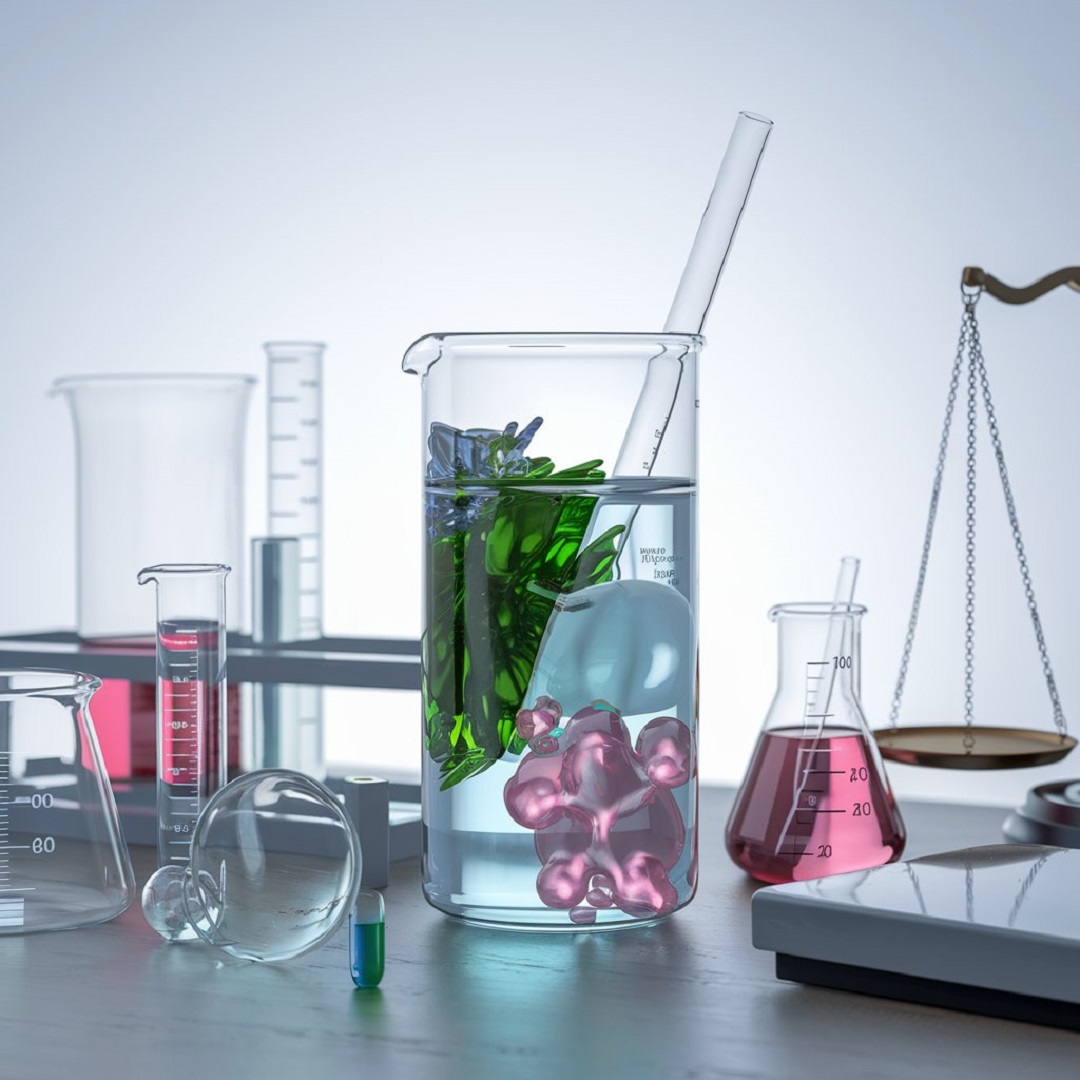An organic compound is any compound based on carbon . Its bonds are covalent, carbon to carbon, or carbon to hydrogen. It is mainly synthesized by living beings, however, it can also be synthesized artificially. Compounds of this type constitute the branch of organic chemistry.An inorganic compound is one that does not have carbon as its main element and in which a covalent bond does not occur between carbon and hydrogen. The most common type of bond in this compound is ionic . Compounds of this type constitute the branch of inorganic chemistry.
| Organic compound | Inorganic compound | |
|---|---|---|
| Definition | Any compound that has carbon as its main element and has covalent bonds of carbon and hydrogen. | Any compound whose main element is not carbon, and which does not have bonds between carbon and hydrogen. |
| Characteristics |
|
|
| Link type | Covalent. | Mostly ionic, and to a lesser extent covalent. |
| Examples | Sugars, nucleic acids, alcohol, wood, proteins, lipids, hemoglobin, methane. | Ammonia, water, sodium bicarbonate and carbon dioxide. |
What is an organic compound
An organic compound is a compound whose main element is carbon , and which has covalent bonds of carbon and hydrogen, or between carbon and carbon. Other components that can be part of this type of compound are oxygen and nitrogen.
Organic compounds are the elements studied by organic chemistry, the rest of the elements being compounds studied by inorganic chemistry. Carbon is part of more than 90% of chemical substances.
However, hydrogen is also an important element in these types of compounds. It is found linked to carbon and together they join other atoms such as nitrogen, phosphorus, boron, sulfur, halogens and oxygen, to form many other compounds.
Another of their characteristics is that they are isomers, which means that the same molecular formula can refer to more than one compound. They have different structures or properties, so their elements are distributed differently.
Characteristics of organic compounds
- They are composed of carbon atoms, which produce carbon-carbon or carbon-hydrogen bonds.
- Hydrogen is also an important element in its composition, in addition to oxygen and nitrogen.
- Its bond is covalent, which means that the atoms that compose it share the electrons of the original elements.
- They can be concatenated, thanks to their carbon atoms.
- They can be synthesized by living beings (biomolecules) or artificially.
- Their bonds also attract other elements such as oxygen and nitrogen.
- The vast majority do not dissolve in water.
- They are highly volatile (combustible) and have little resistance to high temperatures.
- Its boiling and melting points are low.
- They are poor conductors of electricity.
- Its reactivity is slow.
- They present isomerism.
- Organic compounds (presence of carbon) represent the majority of known compounds.
- Organic acids and bases are mild and less soluble in water.
Organic compounds and living beings
These compounds are part of the composition of all living beings and represent the largest amount of chemical elements that exist. They define the functions of organisms, so they constitute the “chemistry of life”. They are part of the processes and chemical reactions of organisms that allow cells to develop the functions that a being needs to live.
Until the beginning of the 19th century, it was believed that organic compounds were found only in living beings or that they were produced exclusively by them. However, in 1823, the German chemist Friedrich Wöhler (1800-1882) carried out an experiment in which he managed to synthesize urea, an organic compound, starting from an inorganic compound.
This refuted the notion of “life force,” which believed that only living beings had the capacity to produce organic matter.
Organic biomolecules
Organic compounds that living beings synthesize are known as organic biomolecules. These compounds enable life and fall into categories such as nucleic acids, carbohydrates, lipids, proteins, and vitamins.
Some compounds do not occur naturally; humans create these artificially, as seen with plastics.
covalent bond
A covalent bond, or atomic bond, forms when two non-metallic atoms share one or more pairs of electrons. The nuclei of these atoms attract the shared electrons, resulting in a bond. The total energy of bonded atoms is lower than that of unbonded atoms. These bonds typically form between non-metallic elements with similar electronegative values, and their covalence increases when their electronegativity is low. Covalent bonds can occur between carbon atoms or between carbon and hydrogen.
Because organic compounds feature covalent bonds, especially those made of carbon, they can also concatenate. When carbon atoms bond, they create very strong chains. This concatenation results in robust and durable compounds, such as diamonds.
Examples of organic compounds
- Citric acid ( C6H8O7 )
- Sugars (carbohydrates)
- Nucleic acids
- Acetylene (C 2 H 2 )
- Petroleum and derivatives such as gasoline or vinyl
- Wood and coal
- Proteins
- Lipids
- Methane (CH 4 )
- Vitamin C (C 6 H 8 O 6 )
- Hemoglobin
You may be interested in knowing the difference between organic and inorganic chemistry .
What is an inorganic compound?
An inorganic compound is any compound formed by two or more chemical elements, which lack carbon or, if they have it, lack bonds between carbon and hydrogen.
Carbon is one of the key elements in the composition of organic elements, but it is not present in most inorganic compounds. However, there are compounds such as carbon monoxide (CO) and carbon dioxide (CO 2 ) that are inorganic and do contain carbon among their components.
In the case of hydrogen, this is an element found in many inorganic compounds (such as water). However, carbon-hydrogen bonds are not present in the composition of these compounds.
They are very stable, withstanding high temperatures and being non-volatile and non-combustible. Reactions occur when they come into contact with other elements.
Characteristics of inorganic compounds
- They are composed of all the elements with the exception of combinations of carbon and hydrogen.
- The prevailing bond is ionic.
- They are soluble in water.
- They are good conductors of electricity.
- Low volatility and combustion.
- Boiling point is high.
- Its reactivity is rapid.
- They do not present either concatenation or isomerism.
- They exist in a much smaller proportion than organic compounds.
- They are less complex than organic compounds.
- Inorganic compounds and living beings
Inorganic compounds and living beings
Inorganic compounds are also part of living beings, even if they are not produced or synthesized by them. Their synthesis originates in geological systems or they are produced artificially.
However, their presence is just as important as that of organic compounds for the functioning of a living organism. For example, an inorganic compound such as water is vital for life and carbon dioxide (CO 2 ) is also important for the life cycle of plants.
Ionic bonds of inorganic compounds
Inorganic compounds mostly contain ionic bonds. In these bonds, one of the elements is an electron donor and the other is an electron acceptor, where each element is oppositely charged with ions.
Unlike covalent bonds, whose elements share electrons and have a low and uniform electronegative charge, in ionic bonds there is a wide difference in the electronegative charge of each one. In addition, there is a transfer of electrons between the atoms that compose them.
They are made up of a metal and a non-metal. The metal that transfers an electron is known as a cation, while the element that gains the electron is known as an anion. In addition, this type of bond allows these compounds to withstand high temperatures and have high boiling points.
Types of inorganic compounds
Organic compounds are grouped according to whether they are acids, bases, oxides and salts, as well as other compounds.
- Acids : are compounds that, when dissolved, release hydrogen ions, have a bitter taste, are conductors of electricity, soluble in water, and, together with bases, produce salt and water, etc.
- Bases : are compounds capable of dissociating hydroxide ions, do not react with metals, and are slippery to the touch, etc.
- Oxides : are compounds in which at least one element is oxygen. These are mainly classified as acidic (when they are formed from non-metals and are rich in oxygen), basic (formed from metals), neutral (formed from non-metals and poor in oxygen), among others.
- Salts : They are ionic compounds, formed by cations and anions. They are solids, with high resistance to heat and conduct electricity in water. They are classified as basic salts (reactions between weak acids and strong bases), acidic (reactions of strong acids and weak bases) and neutral (reactions between strong acids and strong bases).
Examples of inorganic compounds
- Ammonia (NH 3 )
- Sodium bicarbonate (NaHCO 3 )
- Water (H 2 O)
- Carbon dioxide (CO 2 )
- Calcium oxide or Cal(CaO)
- Nitrous oxide ( N2O )
-
Conclusion: Organic and inorganic compounds
In conclusion, organic and inorganic compounds form the backbone of chemistry, each playing vital roles in various biological and industrial processes. Organic compounds, primarily composed of carbon, hydrogen, and often oxygen, drive the processes of life and contribute to the complexity of biological systems. In contrast, inorganic compounds encompass a broader range of substances, including metals, minerals, and gases, and are essential in numerous applications, from construction to electronics. Understanding the distinctions and interactions between these two categories enriches our knowledge of chemistry and highlights their importance in everyday life, science, and technology.
- FOR FERDUR INFORMATION VISIT:https://techlicss.com/

